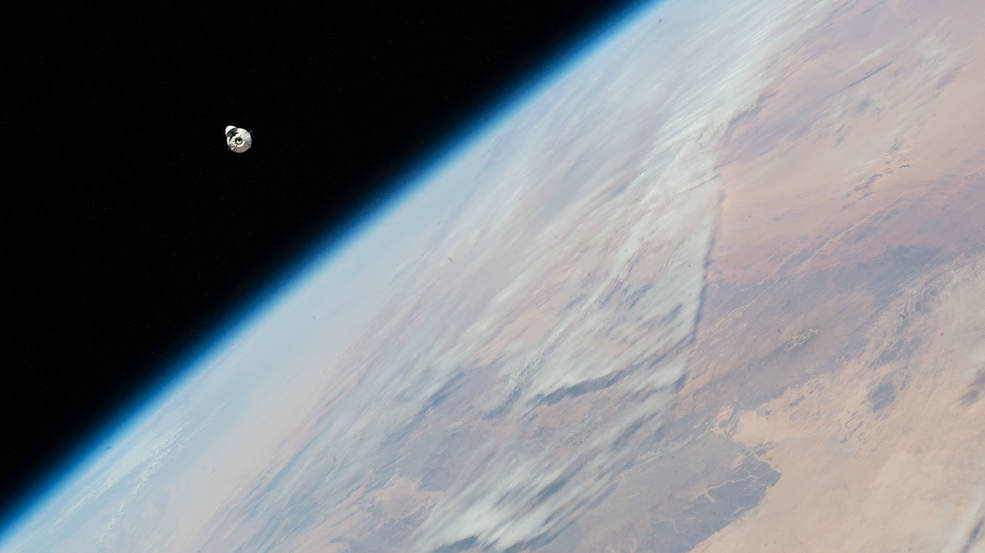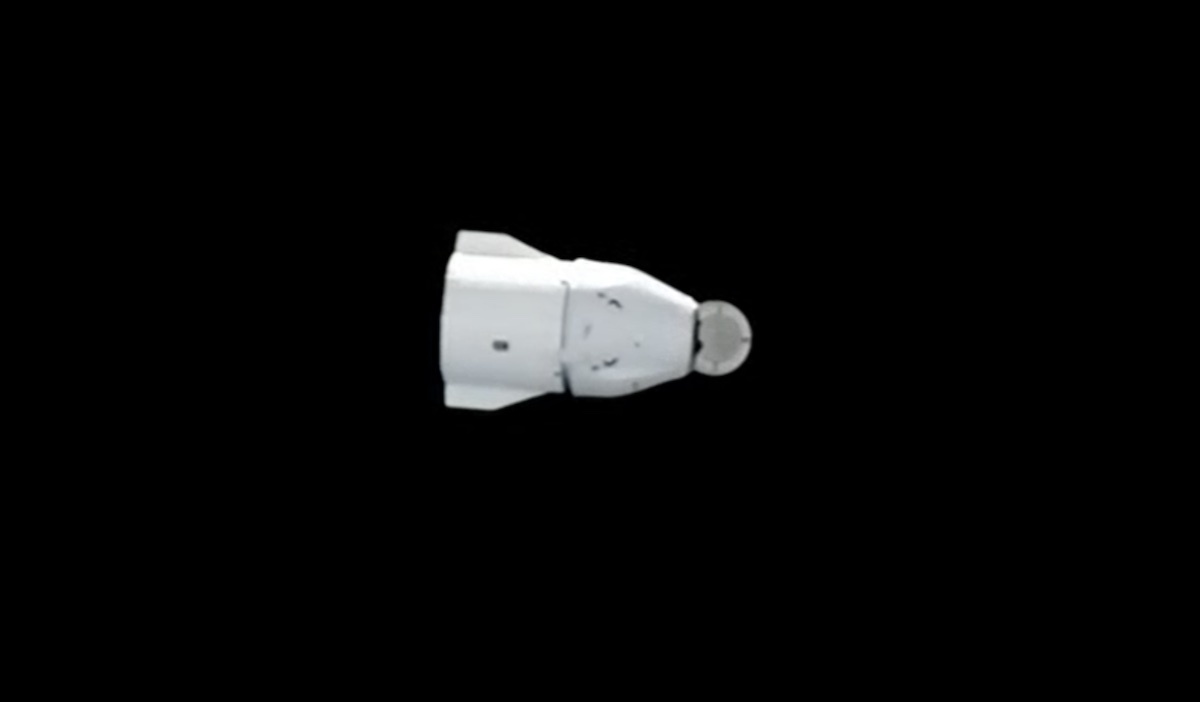8.01.2023

A SpaceX Dragon cargo resupply spacecraft is set to depart the International Space Station on Monday, Jan. 9, returning scientific research samples and hardware to Earth for NASA.
The agency will provide live coverage of Dragon’s undocking and departure on NASA Television, the NASA app, and online at 4:45 p.m. EST. Watch here:
Ground controllers at SpaceX in Hawthorne, California, will send commands at 5 p.m. for Dragon to undock from the zenith port of the station’s Harmony module and fire its thrusters to move a safe distance away from the station.
After re-entering Earth’s atmosphere, the spacecraft will make a parachute-assisted splashdown off the coast of Florida on Wednesday, Jan. 11. NASA will not broadcast the splashdown, but updates will be posted on the agency's space station blog.
Dragon will carry back to Earth approximately 4,400 pounds of supplies and scientific experiments designed to take advantage of the space station’s microgravity environment. Splashing down off the coast of Florida enables quick transportation of the experiments to NASA’s Space Station Processing Facility at the agency’s Kennedy Space Center in Florida, allowing researchers to collect data with minimal sample exposure to Earth’s gravity.
Some of the scientific investigations that Dragon is carrying include:
- Deep space radiation protection: A vest designed to protect astronauts from high doses of radiation caused by unpredictable solar particle events is returning to Earth after months of testing. Crew members wore the Astrorad vest while performing daily tasks and provided feedback about how easy it is to put on, how it fits and feels, and the range of motion possible while wearing it. The vest’s developers plan to use that feedback to improve design of the garment, which could provide radiation protection for astronauts on Artemis missions to the Moon.
- Air, water, plants: XROOTS used hydroponic (water-based) and aeroponic (air-based) techniques to grow plants without soil or other growth media. Researchers collected video and still images to evaluate growth chambers through the plant life cycle from seed germination through maturity. The plant chambers are returning to Earth for additional analysis. Similar techniques could be used to produce crops for future space missions and to enhance cultivation and food security for the benefit of people on Earth.
- Bioprospecting in space: Bioprospecting is the process of identifying plants and animals that may contain substances with potential for use as drugs, biochemicals, and more. Previous studies found that space can cause genetic and physiological changes that could result in microbes yielding such materials. Rhodium Microgravity Bioprospecting-1 studied a way to search for these microbes. The science chambers and temperature logger from the investigation are returning to Earth for further examination.
Dragon arrived at the station Nov. 27, 2022, as SpaceX’s 26th Commercial Resupply Services mission for NASA, delivering more than 7,700 pounds of research investigations, crew supplies, and station hardware. It was launched Nov. 26 on a SpaceX Falcon 9 rocket from Launch Complex 39A at Kennedy.
Quelle: NASA
----
Update: 10.01.2023
.
SpaceX cargo capsule undocks from space station, heads for splashdown

A SpaceX Dragon cargo capsule departed the International Space Station Monday to close out a month-and-a-half of docked operations, heading to a predawn splashdown Wednesday off the coast of Florida with several tons of hardware and experiment specimens.
The Dragon spacecraft undocked from the space station’s Harmony module at 5:05 p.m. EST (2205 GMT) Monday, then fired its Draco thrusters for a series of departure burns to back away from the complex. The departure sets up for a deorbit burn and re-entry back into the atmosphere early Wednesday. Splashdown off the coast of Florida is scheduled for 5:19 a.m. EST (1019 GMT).
The unpiloted supply ship launched Nov. 26 from NASA’s Kennedy Space Center in Florida, riding a Falcon 9 rocket into orbit to begin pursuit of the space station. The Dragon spacecraft autonomously linked up with the station Nov. 27, delivering more than 7,700 pounds of supplies and experiments.
The mission marks SpaceX’s 26th resupply flight since 2012 to deliver cargo to the space station, and is the first flight of SpaceX’s newest Cargo Dragon capsule, designated Dragon C211. This is the final reusable Cargo Dragon spacecraft SpaceX plans to build to meet NASA’s cargo transportation needs for the station through 2030.
For the trek to the space station, the CRS-26 mission was packed with hardware, supplies, and experiments for the space station and the seven-person crew living on-board the complex. The largest element of the cargo load was NASA’s second pair of new roll-out solar arrays to augment the space station’s power system.
NASA astronauts Frank Rubio and Josh Cassada completed two spacewalks last month to install the new solar array wings, which will augment the lab’s electrical production capability for the next decade. The spacecraft also carried holiday food and treats, and eight CubeSats from teams in Brazil, the United States, Canada, Italy, and Taiwan that will be deployed later outside the space station.
For the return journey to Earth, the Dragon spacecraft is hauling high pressure oxygen and nitrogen gas tanks that will be refilled on the ground for a future launch, a catalytic reactor for the station’s life support system, a pressure control and pump assembly for the urine processing system, multifiltration beds for the station’s water processor, a mass spectrometer and hydrogen sensor, and potable water dispenser filters.
The hardware will be refurbished on the ground for a future launch back to the International Space Station.
Quelle: SN

